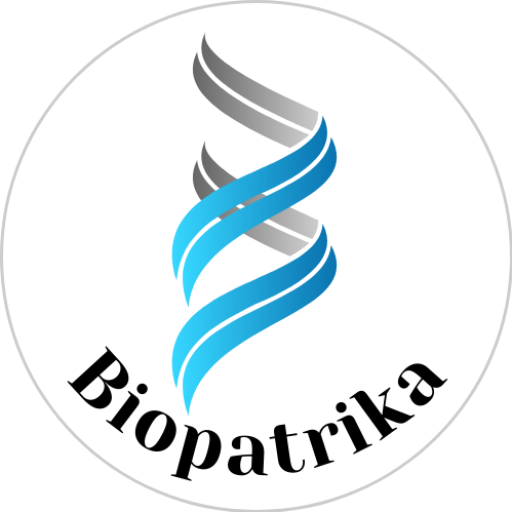Rituximab as a Case Study
Dr. Rozaleen Dash completed her PhD in Biochemistry from the All India Institute of Medical Sciences (AIIMS), New Delhi. She then joined as Scientist-B at Maulana Azad Medical College, New Delhi. Currently, she is working as a Postdoctoral Research Fellow (ICMR-RA) in Prof. Anurag S Rathore’s lab in the Department of Chemical Engineering at the Indian Institute of Technology Delhi, India. Her expertise includes functional characterization of biotherapeutics, comparability of biosimilars, and drug immunogenicity.
Here, she discusses her co-first author publication titled “Impact of mAb Aggregation on Its Biological Activity: Rituximab as a Case Study”, published in the Journal of Pharmaceutical Sciences (2020).
How would you explain your paper’s key results to the non-scientific community?
Monoclonal antibody (mAb) products are susceptible to structural instabilities like aggregation, fragmentation, oxidation, and reduction. Among these, aggregation is a key concern, as it may trigger unwanted immune responses in patients and compromise drug safety and efficacy.
Aggregation can result from physical, mechanical, or chemical stress during manufacturing, storage, filling, shipping, and formulation development. While increasing data show that mAb aggregation raises immunogenicity risks, the exact mechanisms are still not fully understood.
Our study focused on understanding the physical and functional characteristics of Rituximab aggregates produced under stress conditions. We used several analytical techniques:
-
DLS (Dynamic Light Scattering)
-
SE-HPLC (Size-Exclusion Chromatography)
-
TEM (Transmission Electron Microscopy)
-
**Fluorescence Spectroscopy)
To study their biological impact, we applied:
-
SPR (Surface Plasmon Resonance)
-
FACS (Fluorescence-Activated Cell Sorting)
-
ADCC (Antibody-Dependent Cell Cytotoxicity)
-
CDC (Complement-Dependent Cytotoxicity)
We found that the type and extent of aggregation and its biological impact depended heavily on how the aggregates were formed. This work highlights the power of analytical tools in evaluating not only aggregate properties but also their functional consequences.
This study illustrates the ability of different analytical tools in characterizing aggregate species as well as in determining their impact on biological activity.
What are the possible consequences of these findings for your research area?
There is a possibility that the increased bioassay activity observed due to aggregates might be analytical artifacts and not a real biological effect. Further in vivo studies are essential to fully understand the immunogenic potential of aggregates formed under various stress conditions.
Nonetheless, this work is expected to benefit academic and industrial scientists working on protein formulation and stability by providing better understanding and tools to assess aggregation-related challenges.
What was the exciting moment (eureka moment) during your research?
A highlight was during our SPR studies, which are particularly tricky for aggregates. We observed that binding affinity decreased as the percentage of aggregates increased, and this was clearly reflected in KD values and sensorgrams. Successfully achieving reproducible SPR results for these complex samples was a true eureka moment.
What do you hope to do next?
Monoclonal antibodies are structurally complex and contain various critical quality attributes (CQAs) like aggregation, charge variants, and glycosylation. My next research will focus on understanding structure-function relationships and molecular mechanisms driving aggregation in mAbs—an essential step for ensuring product consistency and safety.
Where do you seek scientific inspiration?
For me, science is a way of life—a passionate pursuit to transform questions into discoveries. Since childhood, I’ve been driven by curiosity and fascination with how things work.
My inspiration comes from two remarkable mentors:
-
Prof. Nibhriti Das (PhD guide)
-
Prof. Anurag S Rathore (Postdoc mentor)
They’ve played an instrumental role in shaping my scientific journey.
How do you intend to help Indian science improve?
India is progressing in the biotech and pharmaceutical space, especially in affordable biotherapeutics. I aim to contribute through my scientific expertise and research by supporting innovations in drug discovery, quality control, and biosimilar development—all critical to India’s healthcare needs.
Reference
Bansal R#, Dash R#, and Rathore AS.
Impact of mAb Aggregation on its Biological Activity: Rituximab as a Case Study.
Journal of Pharmaceutical Sciences. 2020; 109(9): 2684–2698.
https://doi.org/10.1016/j.xphs.2020.05.015
(#Equal Contribution)
Edited by: Govinda Raju Yedida (Volunteer, Bio Patrika)
Explore more
🎤 Career – Real career stories and job profiles of life science professionals. Discover current opportunities for students and researchers.
💼 Jobs – The latest job openings and internship alerts across academia and industry.
📢 Advertise with BioPatrika – Reach the Right Audience, Fast!




